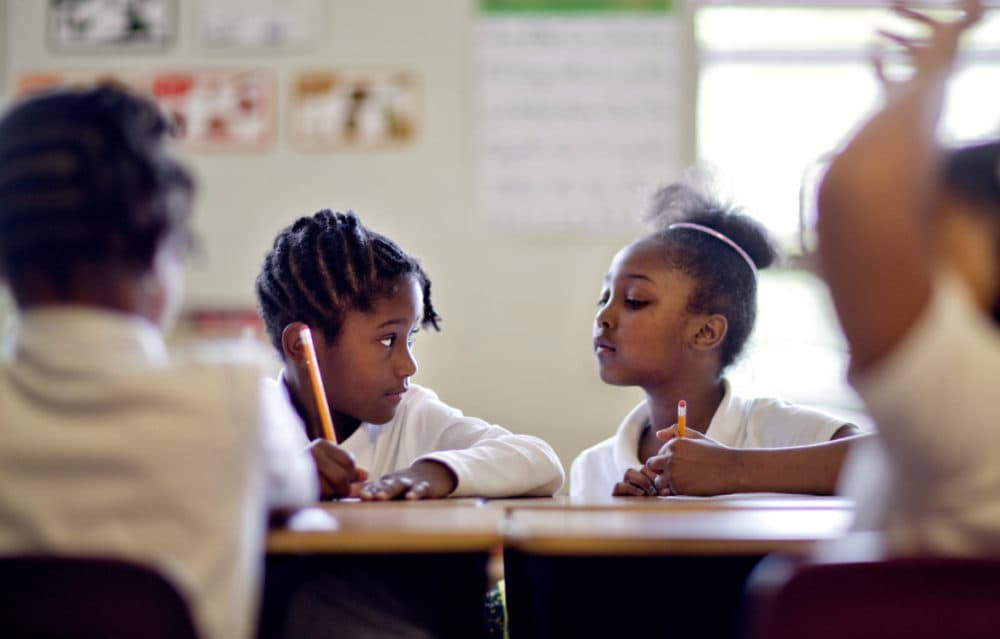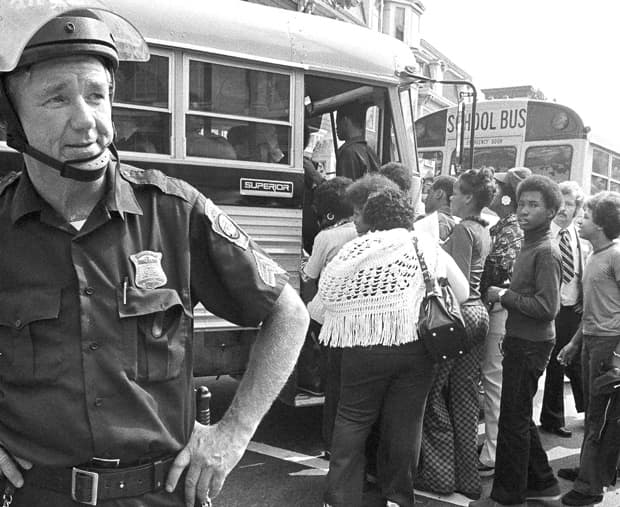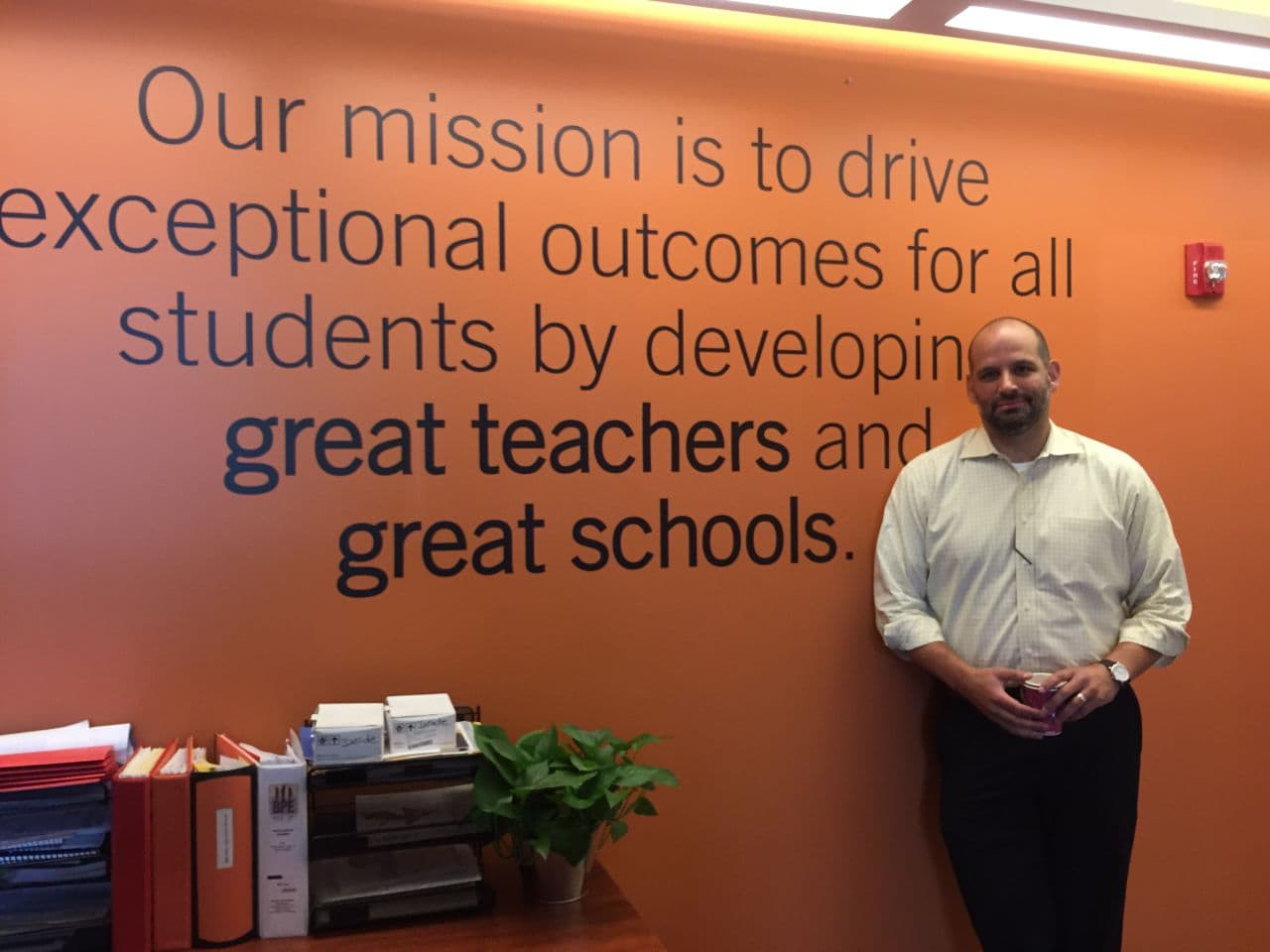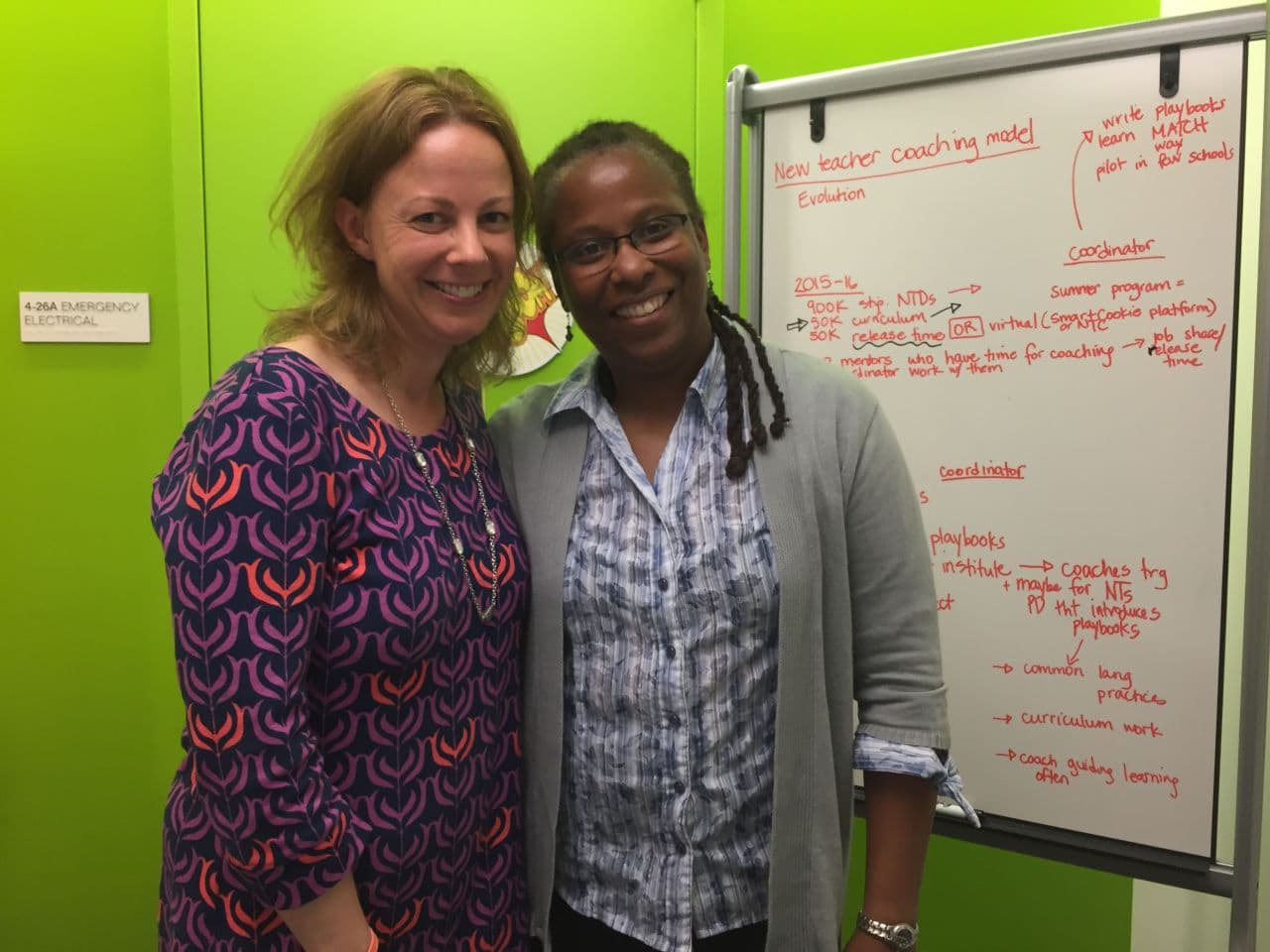Advertisement
Boston Public School System Seeks To Increase Diversity Among Its Teachers

On Monday night, the Boston City Council's Committee on Education is expected to take up an issue city schools have been struggling with for more than four decades: diversity in the classroom.
But councilors won't be talking about diversity among students. Instead, the focus will be on the diversity of the teaching staff.
The student body at Boston Public Schools is one of the most racially and ethnically diverse in the nation — 87 percent are students of color. Meanwhile, only 38 percent of teachers are minorities, and for the last decade that number has been steadily declining.
To buck this trend, Boston has launched an ambitious effort to recruit and retain minority teachers.
Classroom Diversity Is A Decades-Long Issue
It happened nearly 50 years ago, yet Lyda Peters said she remembers exactly where she was on May 17, 1968.
It was a late Friday afternoon and Peters, a teacher at a Dorchester public elementary school, was one of the last to leave the building when she heard a tiny, muffled voice coming from a classroom closet.
"We discovered a first-grader with her mouth taped," she said. "The teacher left for the day and forgot that she had taped her mouth. That was the way she administered punishment for talkative kids, and that was a first-grader."
The girl's frantic mother raced to the school, Peters said.
"So you have this scared, little first-grader who is black, in this school," she recalled. "The school itself had two black teachers, and every other teacher was white — but the school itself was 99 percent black."
Peters was one of the black teachers. The teacher who punished the first-grader was white, a 40-year veteran of the classroom, who admitted she forgot the student was in the closet, but denied putting tape on her mouth or that prejudice played a role in disciplining the girl.
Advertisement
"This is the way a lot of black kids in predominantly black schools in Boston were treated, were taught, were viewed: as if they were second-class citizens — as if they meant little to nothing," Peters said.
Around that time, black parents in Boston had had enough. They sued the Boston School Committee in federal court.
"Do you realize my son went all the way through school, he never saw a black man? Not a teacher, not a counselor," said Jean McGuire, who, in the '60s was active in the Boston black parents' movement. McGuire also founded METCO, which sends inner-city minority students to suburban schools.
"Can you imagine your kids going all the way through school never seeing a white male or female teacher? For 15, 16 years, you never see anyone who looks like you? Think about what that says to them: 'You’re not qualified,' " she said. "That’s pretty cold."
"This is the way a lot of black kids in predominantly black schools in Boston were treated, were taught, were viewed: as if they were second-class citizens -- as if they meant little to nothing."
Lyda Peters, former Boston Public Schools teacher
But it's not just about how that makes minority students feel. It's how students of color do in the classroom.
Anna Egalite, a recent post-doc at Harvard studied minority school kids in Florida. "Overall, students have higher test scores in years when their teacher shares their race, but this was particularly true for elementary students and particularly those students who are lower-achieving in previous years," she said.
Egalite also said students taught by a teacher of their own race gained a month of learning for each school year.
"So we’re saying states and districts should really make an effort to actively recruit talented minorities into teaching," she said.
In Boston, that's proven to be far easier said than done. The city's school system has been trying for 41 years -- ever since the landmark decision by federal District Judge W. Arthur Garrity in 1974.
Boston's Minority Teacher Mandate Remains An Elusive Goal
Garrity ruled Boston had deliberately segregated its schools, and ordered several remedies.
The most widely remembered is forced busing. It caused social and political upheavals that still reverberate today.

But Garrity didn't just want to integrate the student body. He ruled that having teachers of color was essential, too. So he mandated that 25 percent of Boston teachers be black, with another 10 percent of the teaching pool being comprised of other minority groups.
Tito Jackson, chairman of the City Council's education committee, says Boston hasn't met that minority teacher mandate for a decade.
"Judge Garrity understood, this is not a goal or a hope or a dream. It’s the law, and the Boston Public Schools should follow the law," Jackson said.
But this year, less than 21 percent of Boston teachers are black, and most hired after Judge Garrity's order are now retiring.
"The underlying issue at the Boston Public Schools currently is we’re losing teachers of color who are older faster than we are actually attracting new teachers of color," said Jackson.
Boston's black teachers are retiring at a rate three times faster than the district is hiring replacements. Recruiting new minority teachers is a problem nationwide — it's a phenomenon called "the disappearing black teacher."
Boston's starting pay for teachers is among the best in the country, but it isn't enough to encourage black students — especially men, to become teachers.
"And if you're going to get a four-year degree in engineering why would you — quote-unquote — 'waste that on teaching,' when you can go make a lot more money at a more reputable profession," said Jesse Solomon, founder of the Boston Teacher Residency Program.

To attract more minority teachers, Boston has been making efforts, big and small. The city began hiring teachers in the spring — instead of waiting until late summer. And recruiters have now been attending more out-of-state job fairs, because it's been tough finding qualified student-teachers close to home.
"So we’re in Boston. There are huge numbers of universities and huge numbers of education schools," said Emily Qazilbash, the assistant superintendent for human capital with Boston Public Schools. "They are not producing the students that we need. So what we have done is develop our own pipeline for teaching."
Boston's new pipeline includes the recently launched BPS High School to Teacher Program. It identifies city students in high school who would make great teachers. The program then provides the students with mentors, gives them college prep courses, half their tuition and if they are successful, teaching jobs. And, 87 percent of the participants are black or Latino.
There's also the Community to Teacher Program, a rigorous nine-month course for city residents with college degrees who want to switch careers to work in classrooms.
"These are not overnight fixes. We have to aspire to much higher numbers," said Qazilbash.
Today, Boston is a more complicated place than in the black and white world of Judge Garrity's time. Back then, only about 20 percent of residents were people of color, whereas now, Boston is a minority-majority city. The schools are even more so, as 35 percent of Boston students are black and 40 percent Latino.
Qazilbash says Boston schools have to address the needs of all their students. They come from 142 countries and speak 84 languages.
"Actually, at this point, I’m careful to talk about the importance of having teachers that bring racial, cultural, ethnic, linguistic diversity to our workforce, because I don’t want to just reduce it to a number, and honestly, if we were at 25 percent black teachers, 10 percent Latino, that’s not enough," she said.

Boston's recruiting efforts are starting to pay off — 25 percent of the new teachers hired this school year are black. Other numbers are improving too: Boston's dropout rate this year is the lowest in schools' record-keeping history. Still, it remains higher for students of color than whites.
But, experts said, that's something that teachers of color can help fix.
"We think one way to improve the outcome for black and Hispanic students is to give them a teacher who looks like them," said Egalite, the Harvard post-doc researcher.
Egalite believes the effect goes far beyond test scores, leading to increased high school graduation rates and college enrollment.
The stakes are high. Right now, only 1 out of every 5 black or Latino boys who start kindergarten in Boston will graduate from high school. Councilor Jackson said nearly 30 percent of those who don't finish school will wind up in prison.
"Over the course of their lifetime, it costs us $400,000 per person who drops out, so we have to figure out a way to stem this tide, and it’s really a pay now or pay later with interest," he said. "Education is definitely the civil rights agenda of our time."
Education was also the civil rights agenda 41 years ago, when Judge Garrity first ordered Boston schools to diversify their teaching staff. Today, the minority mandate is still the law — and remains an elusive goal.
9/15 Editor's Note: We have closed the comment thread for this story.
This segment aired on September 14, 2015.
